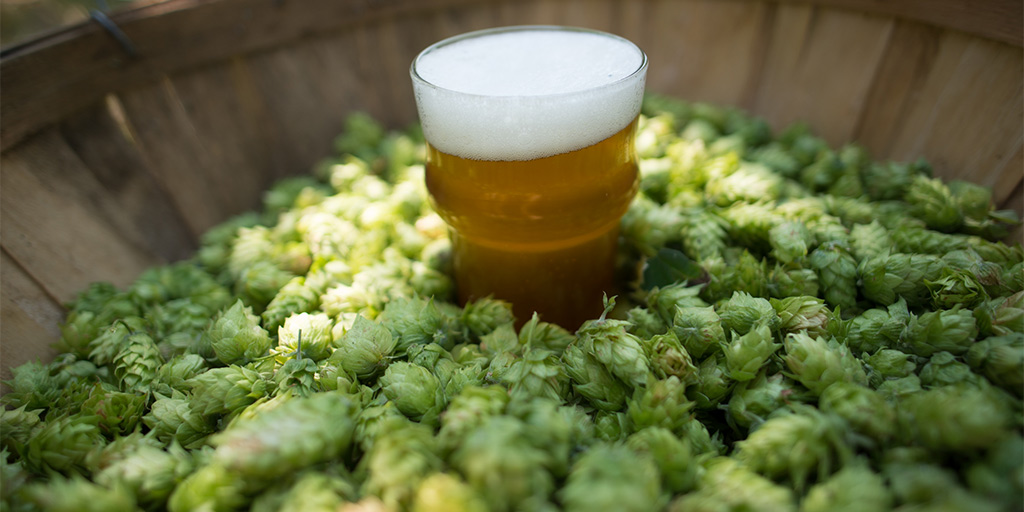It’s no secret that many craft beer enthusiasts have a deep appreciation—bordering on cult-like obsession—for the India pale ale. In honor of #IPAday 2014 (August 7), we’re taking a look at Community Beer WorksOpens in new window‘ Dan Conley’s attempt to crack the code of the IPA’s commercial success.
Conley’s recent post on the Buffalo, N.Y. brewers’ blog entitled “The IPA HegemonyOpens in new window,” really caught my attention, so after a quick Google of hegemonyOpens in new window, I dove into the piece.
“The IPA is our best selling beer at retail every week, with exceptions only when we have something new or when people [have] drank everything we made the week before,” wrote Conley. “I’m not going to pretend that I have the answer to why this is, though. I have ideas, but obviously speaking factually about why people like what they like is at best fraught with peril and at worst complete drivel.”
4 Reasons Why the IPA Is so Popular
- They taste good.
- They’re “advanced.”
- They have lots of flavor.
- Science!

Dan is the first to admit that this is just his list, but I liked it so much that I wanted to elaborate on his points.
IPAs Taste Good
It is important that Conley has separate entries for taste and flavor. It might interest you to know that they are not quite the same thing. Along with sight, smell, touch and hearing, taste is one of our five senses. Our taste buds recognize sweet, salty, sour, umami and bitter.
Bitter is certainly a major factor when tasting an IPA, as the style employs an increased amount of hops which can add what is often described as evident, bracing and even aggressive bitterness. Since everyone has slightly different tastes, what may be evident bitterness to one craft beer drinker may be bracing to another.
IPAs Are “Advanced”
While bitterness of an IPA has a lot to do with a person’s individual perception, we also know that tastes can change over time. You may not have enjoyed the first highly-hopped IPA you tried, but over time, perhaps you grew to really enjoy a bracingly bitter IPA—or not, that’s ok too!
Human taste is pre-wired from the time we’re born. For example, innately we like the taste of sweet things as children, but perhaps do not take to sour or bitter flavors right away. But as we grow up and try new things, our brain figures out that not all sour and bitter flavors are bad, such is the case with IPAs.
In a nut shell, beer drinkers are not pre-wired to like IPAs, you learn to like them, so in a weird way it can be a craft beer badge of honor to order one.
Experts believe that our sense of taste helped ancient humans choose what types of things were good to eat. To the human mind, a sweet taste translates to calories and energy, which is good for a hungry little hunter-gatherer. However, sour tastes may mean that the food has become rancid or is potentially poisonous.
Bitterness in beer is not bad, and actually often provides a refreshing balance. Wouldn’t beer be boring if it was just sugary sweet? So perhaps enjoying an IPA does signify a state of advanced beer appreciation. Being able to sense not just the bitterness of an IPA, but the more nuanced contributions hops add to a beer, such as aroma and flavor happens over time.
In a nut shell, beer drinkers are not pre-wired to like IPAs, you learn to like them, so in a weird way it can be a craft beer badge of honor to order one.
IPAs Have Lots of Flavor
While taste is one of our five senses, flavor is considered a synthetic sense, where a mix of stimuli come together and our brain works to recognize, record and recount a certain flavor. Taste plays a role in flavor, but all of the other senses work in cooperation to create flavor too.
When you drink an IPA, you experience a lot of different components, but your taste buds can really only tell you if what you are experiencing is sweet, bitter, sour, salty or umami. In this case, there might be some sweet and bitter, but when the taste of an IPA is paired with the aroma and golden color, you sense flavors like grapefruit, pine, roses, etc.
Science!
Each drinker’s personal taste is as unique as the fingerprints on their condensation-covered glass—it’s totally subjective. What one may like about the flavor of an IPA may be different from what another may or may not like about the style. I love IPAs, but do I love every IPA I try, not necessarily. Science is certainly a major player in the IPA discussion, from hop variety development, all the way to personal flavor perception.
Appropriately, Conley finishes with the obvious answer of, “They’re popular because damn, they’re tasty.” Does that mean that all examples of the style are tasty to everyone—no. Each of us has a unique set of tastes, both inherited and learned. Some will never like the bitterness of an IPA, and some will decide they do. Luckily, there are plenty of IPAs out there to test and train your taste buds.
Thanks to Dan for allowing me to expound on his post! I’m not a sensory expert, but I did stay in a Holiday Inn Express last night. If you want to see where I came up with this stuff, I sincerely encourage you to check out the book, Neurogastronomy: How the Brain Creates Flavor and Why It Matters by Gordon M. Shepard. It’s pretty technical, but well worth it.
CraftBeer.com is fully dedicated to small and independent U.S. breweries. We are published by the Brewers Association, the not-for-profit trade group dedicated to promoting and protecting America’s small and independent craft brewers. Stories and opinions shared on CraftBeer.com do not imply endorsement by or positions taken by the Brewers Association or its members.


Share Post